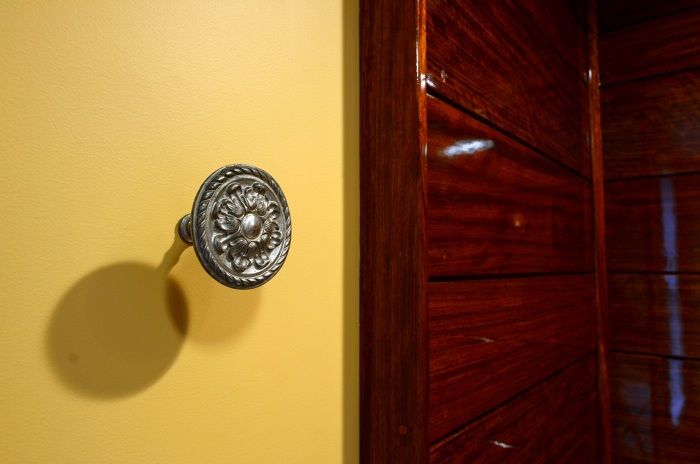
Picus Woodwrights recently completed renovating a small, full bathroom on the second floor of a historic farmhouse in southern Rhode Island. The homeowners did not want to expand the footprint of the bathroom and as it is located above a formal dining room. As the plumbing locations offered few options for changing the layout we needed to rethink the space without completely changing the fixture locations. The homeowners work keeps them traveling extensively and they have collected antiques from all over the world. They wanted the new bathroom to reflect their eclectic and diverse taste and to harmonize with the rest of the house while incorporating a few creative design decisions which demonstrate a high level of craftsmanship.
The solution we came up with for the bathtub and shower was to install a stock tub base in the same location as the old one beneath a wooden shower surround which we designed and built. Additionally we, repurposed a small antique Chinese dresser which the homeowners had acquired as a base for a vessel sink.
The lead carpenter on this project had many years of experience in the wooden boat restoration world prior to moving in to the world of remodeling. We drew upon his experience and designed the shower surround around a polyester fabric shell bedded in marine epoxy. We then installed composite sleepers to create an air space and offer a fastening location for the wood. We chose Bubinga for the surround for its beauty and resistance to rot. The boards were half lapped and finished on all faces with a high gloss marine varnish. All end grain was also sealed with marine epoxy.
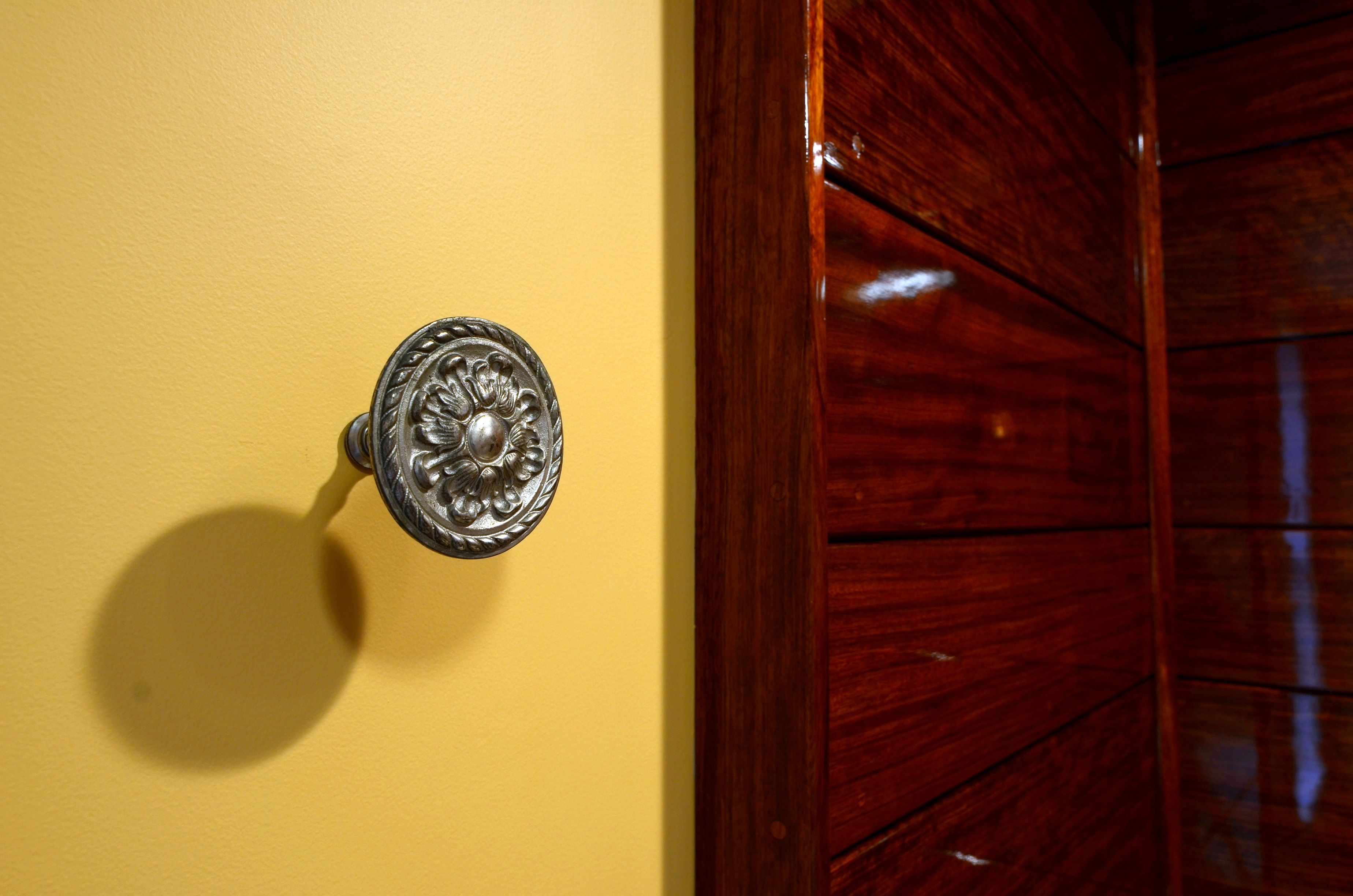
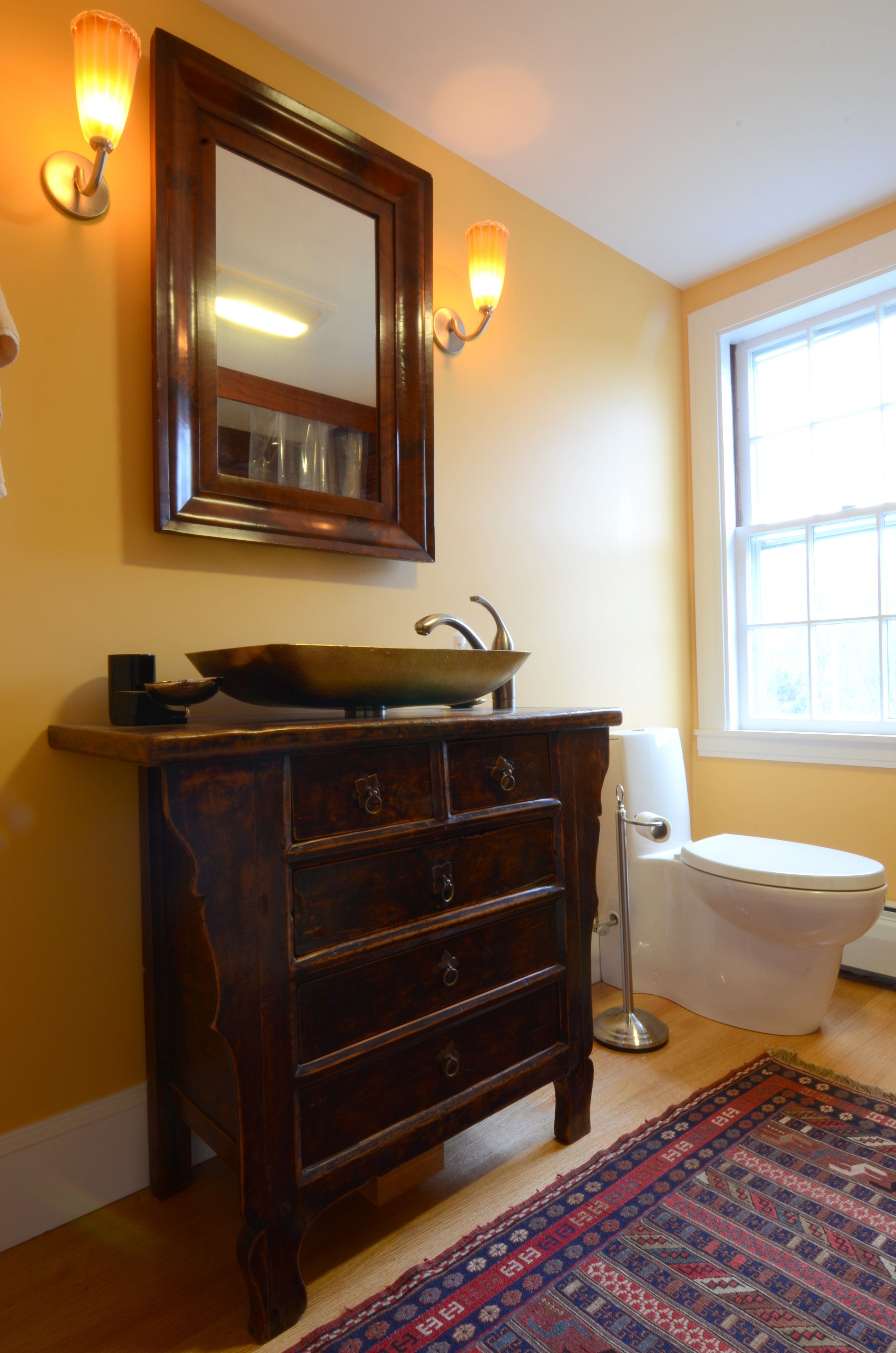
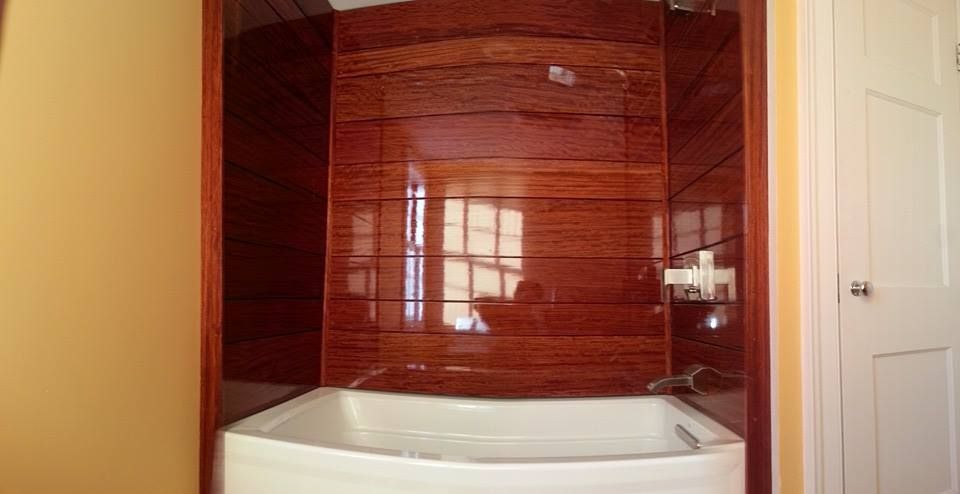
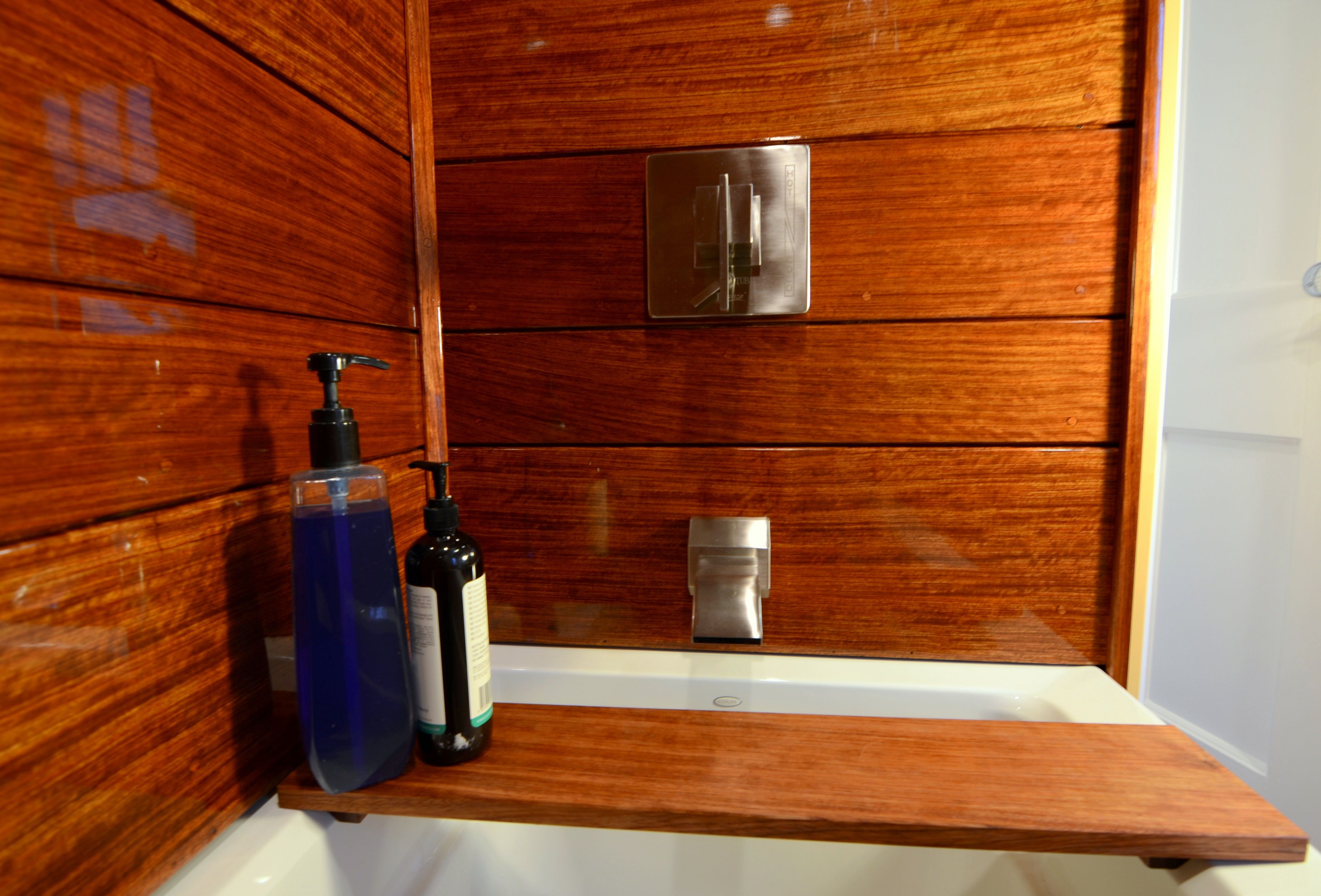
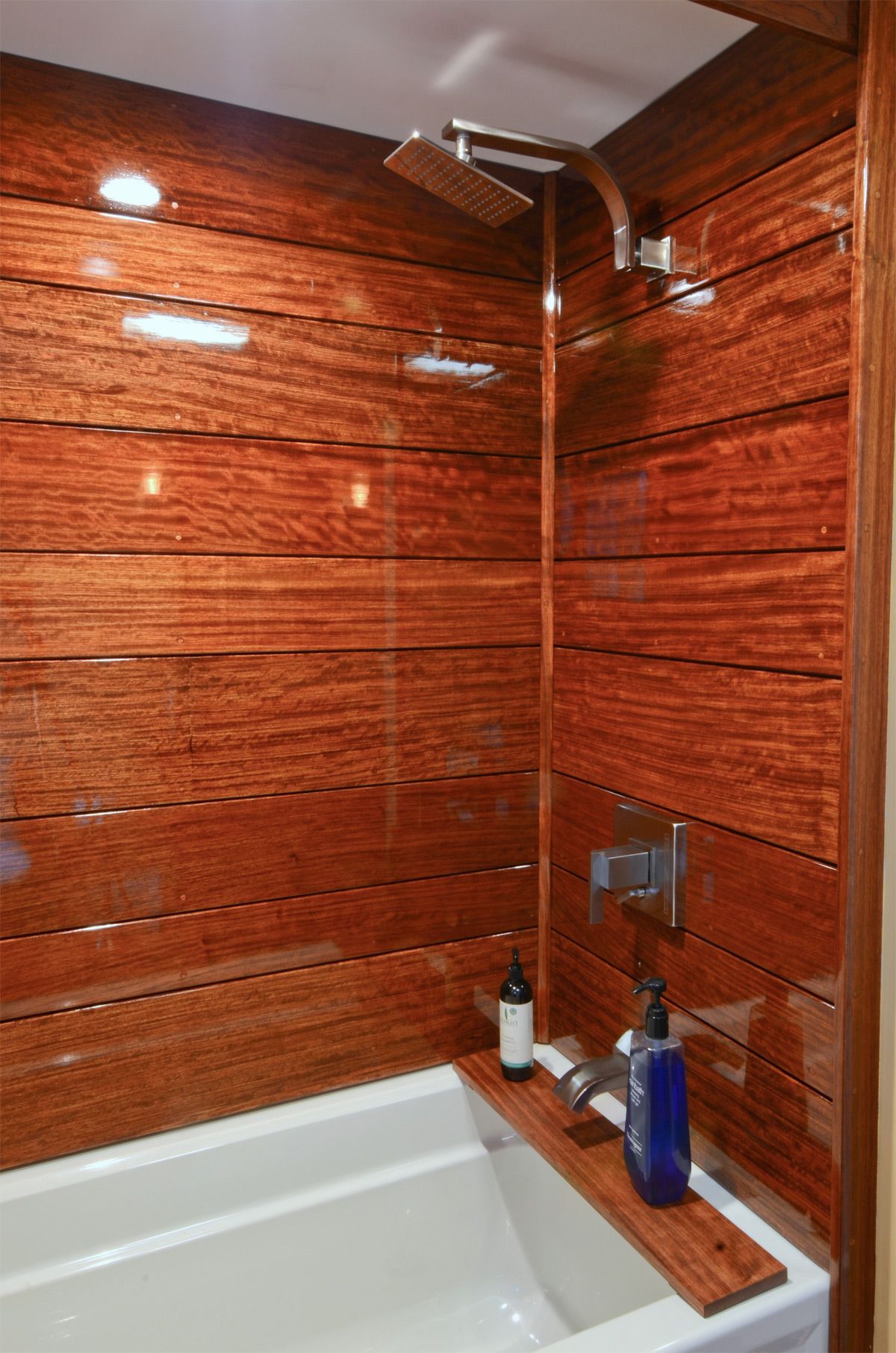























View Comments
"...designed the shower surround around a polyester fabric shell bedded in marine epoxy."
I would like to know more specifics of this particular application. Certainly sounds as tho it would, indeed, be water tight.
"...installed composite sleepers to create an air space and offer a fastening location for the wood."
And creating air circulation - very smart.
I too would like to know more.
-How did you affix the composite sleepers to the poly membrane? Thinset? Seems screws would create a potential.
-How did you affix the wood to the sleepers?
-Is it designed to allow water behind the wood, or did you attempt to seal the wood, and permit air circulation as a "just in case" measure?
Atsimons1 and Mr. Fields,
The enclosure is not designed to allow water to get behind the wood and is intended to be quite dry, however, we did not want to bet the house on it. Thus, we tried to make the finished face as secure and stable as possible and designed the framing and shell around the reasonable assumption that water will win in the end.
The quarter sawn bubinga is very stable and was air dried. We ship lapped the joints and added a bevel pitched towards the tub. It is fastened with stainless screws in the non-visible portion of the lap and at the bottom of each face. We countersunk each screw and used West System epoxy to hold the plugs. Furthermore, we predrilled all fasteners and filled them with silicone prior to adding the screw.
The sleepers created an air space and made sure that the finished face of the enclosure was well inside of the perimeter of the tub. That gave us space to add a drip edge between the dynel and the edge of the perimeter. We took the same approach installing the sleepers as the bubinga- we screwed them in place and backfilled each screw hole with silicone.
Thanks for the feedback!